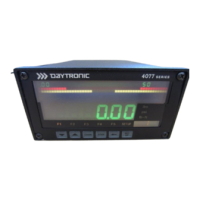If you did not order a specific
RS-232-C Interface Cable
with your 4077,
you will have to provide your own connection. Fig. 11 shows suggested
cabling between a 4077 and a computer, terminal, buffered printer, etc.,
that uses a
25-Pin RS-232-C Connector
. FOR MAXIMUM DATA-
TRANSFER SPEED AND ACCURACY, A "FULL HANDSHAKE"
INTERCONNECTION IS GENERALLY RECOMMENDED (Fig. 11(a)).
However, cabling is also given for "INCOMING HANDSHAKE ONLY"
and "NO HANDSHAKE" situations (Figs. 11(b) and 11(c), respectively).
Following RS-232-C conventions, the device at each end of the
interface is seen as "DATA TERMINAL EQUIPMENT (DTE)."
Fig. 12 shows suggested cabling between a 4077 and a computer,
terminal, printer, etc., that uses a
9-Pin D-Subminiature Connector
for
its RS-232-C interface (such as an IBM PC/AT).
Please note that the cabling in Figs. 11 and 12 is by no means
definitive. In all cases, you should carefully study the literature
accompanying the specific RS-232-C device you wish to connect to
your 4077, to determine the cable arrangement that will create the
"handshake" you need (if any). On some devices, for example, the
DATA TERMINAL READY (DTR) signal may have a different name
(such as NOT BUSY) and may even appear on a pin other than No. 20
or No. 4.
NOTE: OPTIONAL IEEE-488 INTERFACING REQUIRES AN
EXTERNAL MODEL 10CIF488A IEEE Interface Adaptor. Complete
instructions will be supplied with this equipment.
B.1
4077/Computer RS-232-C Connections App. B

